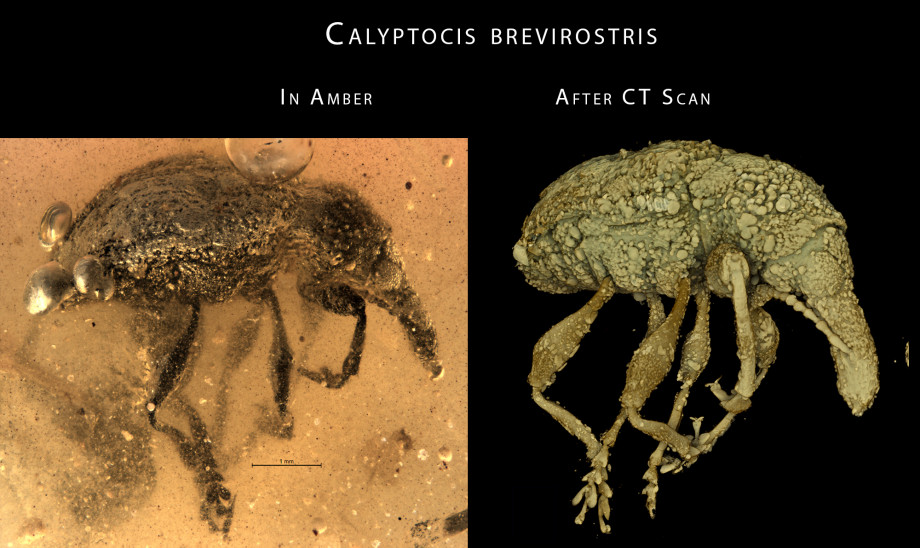One hundred million years or so ago in present-day Burma, a random assortment of insects, flowers, reptiles and even tiny dinosaurs became trapped in the oozing resin of trees in an ancient forest. That resin eventually turned into amber, a solid, translucent material that has protected and preserved the samples inside. Now, almost 100 specimens from the treasure trove of Burmese amber are revealing the secrets of Cretaceous weevils.
A weevil fossilised in amber is an amazing thing. Not just because it is tiny and intricate but also because, despite being 100 million years old, it is in perfect condition. Dr Rolf Oberprieler from CSIRO's Australian National Insect Collection has spent his career learning about weevils and their role in our ecosystems. For him, investigating this collection of fossilised weevils using a mix of digital imaging and microscope technologies was a rare opportunity to expand our knowledge about previously unknown species.
He says, "These specimens are very old, but the amazing thing is how well preserved they can be. You can see so many details in there, details that have been conserved in their original state for millions of years."
Taking clear pictures of the weevils requires you to cut the amber down to a tiny cube a few millimetres across, barely bigger than the insect inside. In most cases, you can then use a microscope to see the shape of the abdomen, the barbs on the legs and the positioning of dozens of tiny features that make up a weevil's body. Sometimes however, the amber is blurry, obscured by trapped bubbles or slightly warped. To look in detail at these specimens, the researchers turned to CT-scanning and NCI's Drishti visualisation technology.
Developed by NCI's Dr Ajay Limaye, Drishti allows researchers to visualise complex data sets in 3D. Once scanned and processed, you end up with a 3D model that you can manipulate, zoom in on and describe. It gives you a whole new way of seeing those specimens that are otherwise impossible to see clearly. Seven of the specimens were analysed in this way, with more to come in the future. CT scanning and visualisation in Drishti allowed these weevils to come to life from their amber tomb in 3D, looking like they would have 100 million years ago when they inhabited the forests of the middle Cretaceous period.
Dr Oberprieler and his colleagues found 53 previously unknown species of weevil during their investigations, all of them belonging to a brand new, extinct family. These weevils might not be around anymore, but they can help us understand the ones around us now. Weevils today are one of the most diverse groups of animals and include many pests affecting Australia's crops but also several beneficial species that keep invasive weeds under control. Research like this help us to understand weevils' long and intimate association with plants, and how they have adapted to become specialist herbivores.
Click here to read the complete paper: https://www.mdpi.com/1424-2818/11/1/1
